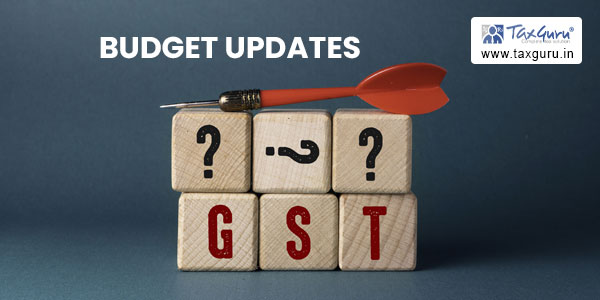Article explains E-Invoice under GST with Government Preparation on E-Invoice under GST, Applicability of E-Invoice under GST, Process to Generate an E-invoice under GST, Summary Of Notifications Issued on 13th December 2019 related to E-invoice under GST, Other Points related to E-invoice under GST, Mandatory Fields Of E-Invoice and Links to the Notifications Related to E-invoice under GST.
Page Contents
- 1. Introduction to E-Invoice under GST
- 2. Government Preparation on E-Invoice under GST
- 3. Applicability of E-Invoice under GST
- 4. Process to Generate an E-invoice under GST
- 5. Summary of E-invoice related Notifications Issued on 13.12.2019
- 6. Other Points related to E-invoice under GST
- 7. Mandatory Fields Of E-Invoice
- 8. Links to the Notifications Related to E-invoice under GST
1. Introduction to E-Invoice under GST
- E- invoice is an invoice which has unique invoice reference number (‘IRN’) generated by Invoice Registration Portal (‘IRP’)
- E-invoice is not only part of Tax reform but also a Business reform as it make the e-invoices completely inter-operable eliminating transcription and other errors
- It must have mandatory 45 fields/ details with limited sets of characters/ digits
- ERP is required to integrate with specific tool/ technology to generate an Invoice reference number (‘IRN’) for E-invoice.

2. Government Preparation on E-Invoice under GST
- Finance minister, Nirmala Sitharaman has given a statement on July 5, 2019 in Union Budget 2019 that E-invoicing will be introduced in 2020
- The GST Council has approved the standard of e-invoice in its 37th meeting held on 20th Sept 2019
- Government is actively working on this project and conducting workshops on PAN India basis to provide information about the framework
- Government has already notified its first invoice registration portal (‘IRP’) i.e. National Informatics center (‘NIC’) which will validate invoices on real time basis
- GST Council has given the responsibility to design the standard of an e-invoice to GSTN which will act as custodian of invoices
3. Applicability of E-Invoice under GST
- E-invoicing will be mandatory from 1 April 2020 for businesses having turnover of INR 100 crore or more
- It will start on voluntary and trail basis from 1 January 2020 if turnover is INR 500 crore or more
- It will start on voluntary and trail basis from 1 February 2020 if turnover is INR 100 crore or more
- Applicable for B2B invoices only and QR code is required to be mentioned on B2C invoices
- It is applicable on domestic B2B sales, export sales and sales to SEZ units.
- Provisions will be applicable on tax invoices, debit notes, credit notes and RCM invoice except pro-forma invoices.
4. Process to Generate an E-invoice under GST
- Step 1– Invoice will be generated by the supplier in his own accounting or billing system
- Step 2-JSON file will be generated by the supplier to upload on the IRP.
- Step 3 (Optional)- Unique Invoice Reference Number (‘IRN’) can be generated by the supplier on the basis of 4 parameters like Supplier GSTIN, invoice number, financial year and document type.
- Step 4– Supplier will upload the JSON file of the e-invoice along with IRN already generated directly on the IRP or through GSPs.
- Step 5 – IRP will generate IRN and validate IRN of JSON if already uploaded by the supplier. IRP will add its signature on the invoice data as well as a QR code to the JSON.
- Step 6 – Supplier will download digitally signed JSON with IRN along with a QR code. IRP will share back digitally signed e-invoice to seller and recipient if email id’s are mentioned on the e-invoice.
- Notified class of person would issue an invoice in Form GST Inv-01 (Refer Turnover criteria)
- Government has notified 10 web portals managed by GSTN which can be used for issuance of E-invoice
- Quick Response (QR) code will be mandatory from 1 April 2020 for B2C invoices if aggregate turnover in a financial year exceeds INR 500 Crore
- IRP will validate mandatory fields before issuing reference number.
- IRN will be based on 4 parameters like Supplier GSTIN, invoice no., financial year and document type
- Maximum number of line items are restricted to 100 which might further be increased to 250. Multiple products/ services covered under same HSN will be treated as 1 line
- IRP will generate QR code, generate IRN, digitally sign and may send e-invoice to buyer and seller if email id’s are mentioned on the tax invoice
- Option to cancel the invoice within 24 hours after generation
- Customer/ service/ vendor master needs to be updated according to new requirements to generate invoice in a timely manner and to book input credit in the system
- We can change category of invoice from unregistered to registered and amend GST numbers of already reported B2B invoices as per current GST provisions i.e. till filing of GSTR-1 of September of subsequent FY.
7. Mandatory Fields Of E-Invoice
| Sr. No. | Category | Particulars |
| 1. | General
|
Version number (Tax schema), Invoice reference number, Code for invoice type, Invoice number , Invoice date |
| 2. | Supplier | Legal name (Name appearing in PAN), GST number, Address, State name, Pin code |
| 3. | Buyer | Legal name, GST number, State code, Address, State name, Pin code |
| 4. | Payment | Payee name, Account number, Payment mode, IFSC code |
| 5. | Delivery | Company name, Address, State name, Pin code (Applicable in case of stock transfer/ sale of goods |
| 6. | Invoice item | Serial number, Quantity, Item rate, Net amount, GST rate, GST Amount, Batch number for manufactures |
| 7. | Document Total | Total invoice value, Total tax amount, Amount paid in advance, Amount due |
| 8. | Extra | Tax scheme |
| 9. | Ship to | Company name, GST number, Address , Pin code, State name, Supply Type ,Transaction mode |
8. Links to the Notifications Related to E-invoice under GST
| Title | Notification No. | Date |
| CBIC notifies class of registered person required to issue GST invoice having QR Code | Notification No. 72/2019–Central Tax [G.S.R. 928(E)] | 13/12/2019 |
| CBIC notifies rule 46 of CGST Rules, 2017 (Tax Invoice) wef 01.04.2020 | Notification No. 71/2019–Central Tax [G.S.R. 927(E)] | 13/12/2019 |
| CBIC notifies Class of registered person required to issue e-invoice under GST | Notification No. 70/2019–Central Tax [G.S.R. 926(E)] | 13/12/2019 |
| CBIC notifies common portal for e-invoice under GST | Notification No. 69/2019–Central Tax [G.S.R. 925(E)] | 13/12/2019 |
| CBIC amends Manner of Issuing Tax Invoice under GST | Notification No. 68/2019–Central Tax [G.S.R. 924(E)] | 13/12/2019 |
Author can be reached at cavipinmittal@gmail.com
Kindly Refer to
Privacy Policy &
Complete Terms of Use and Disclaimer.






















under E-invoice whether Debit/Credit note also should carry IRN & QR Code. please suggest
how do we address the e-invoice for stock transfer within branch
is gross turnover or net turnover considered for e Invoiceing
What is format of JSON file?
Government not mention it?
Because JSON file contains so many format.
E-invoice mandatory for 500/100 Crores means, whether 500/100 Cr Turnover per GST registration in one single state or multiple GST registration altogether in different states. Plz clarify.
(In fact, we hv Pan India turnover is more than 100 Cr but in one state turnover is less than 100CR.)
Own Pick:
“3. Applicability of E-Invoice under GST
………
“It will start on voluntary and trail basis from 1 February 2020 IF TURNOVER IS INR 100 CRORE OR MORE.
………..” (FONT to focus)
As personally read and independently understood:
The new mandate has been made applicable and is expected to be strictly complied, with no option open, by switching over to E- invoicing from the specified cut-off date, for the financial year 2020-2021 (and onwards); provided the ‘turnover’ for the immediately following financial year ending 31-03-2021 crosses the threshold limit of INR 100 Crore.
As such, for deciding whether or not the mandate is applicable, a registered person might have to be in a position to make a reasonable/ more or less an accurate estimation of the expected turnover for the said financial year. Going by own common sense thinking, however, such an estimation seems impossible; that too on the very opening date of, – and in many cases even on any subsequent date until closer to the end of – the financial year.
Anyone with a materially different view to spare and share; if so, any well-thought-out suggestion/ feasible alternative to render the mandate workable/implementable?!
courtesy
Well explained
Applicable for service provider also?
mandatory from 01-April-2020 for those turnover exceed INR 100 crore but turnover consideration for FY 2019-2020 ??